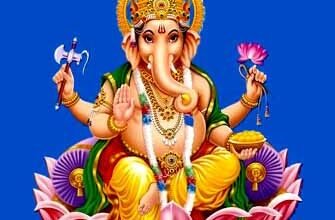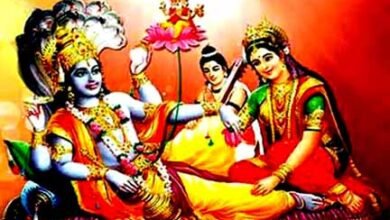
वासंती नवरात्रि…
रक्ष रक्ष महादेवि दुर्गे दुर्गतिनाशिनि। मां भक्त मनुरक्तं च शत्रुग्रस्तं कृपामयि॥
हिन्दू पंचांग के अनुसार, वर्ष का नया महीना चैत माना गया है. यह महीना बड़ा ही पावन और पवित्र माना गया है. ज्ञात है कि, चित्रा नक्षत्र के कारण इस महीने का नाम चैत पड़ा. चैत के इस महीने में वसंत ऋतु होती है. वसंत की शुरुआत और शरद की शुरुआत जलवायु और सूरज के प्रभावों का महत्वपूर्ण संगम माना जाता है. माँ भगवती की पूजा आराधना चैत और आश्विन महीने में बड़े धूमधाम से की जाती है. वसंत ऋतु होने के कारण चैत नवरात्र को वासंती नवरात्र भी कहते हैं. वासंती नवरात्र में देवी अंबा विद्युत का प्रतिनिधित्व करती है.
संस्कृत का शब्द है नवरात्रि जिसका अर्थ होता है ‘नौ रातें’. नौ रात्रियों का वैदिक साहित्य में बड़ा ही सुंदर वर्णन किया गया है. नवरात्री का संधि होता है नव+रात्रि. जिसमे ‘नव’ का अर्थ होता है ‘नया’ और ‘रात्रि’ का अर्थ होता है ‘अंधकार’. नवरात्र को आसान शब्दों में कहें तो,जब दो ऋतुओं का मिलन होता है तो इस काल को संधि काल कहते हैं. इस संधि काल में ब्रह्मांड से असीम शक्तियाँ या यूँ कहें कि, ऊर्जा प्रथ्वी पर पहुंचती है जिससे शारीरिक बीमारियाँ बढती है और इन बीमारियों से बचाव हेतु या यूँ कहें कि, शरीर को शुद्ध रखने के लिए, स्वस्थ रहने के लिए और तन-मन को निर्मल बनाए रखने की प्रक्रिया को ही नवरात्र के नाम से जानते हैं.
पौराणिक ग्रंथों के अनुसार, मानव शरीर में नौ मुख्य द्वार होते हैं. इन द्वारों में मुख्य द्वार होता है ‘इन्द्रिय’. इन्द्रियों में स्वच्छता और अनुशासन स्थापित करने के लिए ‘नौ’ द्वारों की शुद्धि का महापर्व ‘नौ’ दिनों तक मनाया जाता है. इस दौरान व्रत पालन, सात्विक आहार, शरीर की शुद्धि, उत्तम विचार और उत्तम कर्मों से मन शुद्ध और निर्मल होता है.
नवरात्रि के नौ रातों में त्रिदेवियों (महालक्ष्मी, महासरस्वती,और दुर्गा के नौ स्वरूपों की पूजा होती है जिन्हें नवदुर्गा भी कहा जाता है. इन नौ रातों और दस दिनों के दौरान, शक्ति या यूँ कहें कि, देवी के नौ रूपों की पूजा की जाती है. नवरात्रि के पहले तीन दिन देवी दुर्गा या यूँ कहें कि, ऊर्जा या शक्ति की आराधना की जाती है. जिसमें पहले दिन बालिका की पूजा, दुसरे दिन युवती की पूजा और तीसरे दिन वैसी महिला जो परिपक्वता के चरण में पहुंच गयी है उसकि पूजा की जाती है. नवरात्रि के चौथे से छठे दिन ‘लक्ष्मी- समृद्धि और शांति की देवी’ की आराधना की जाती है. सातवें दिन ज्ञान और कला की देवी माँ सरस्वती की आराधना की जाती है. आठवें दिन एक यज्ञ किया जाता है और नवमें दिन जिस महानवमी के नाम से भी जाना जाता है इस दिन दिन कन्या पूजन होता है.
वासंती नवरात्र के नवमे दिन भगवान हनुमान की पूजा भी की जाती है और इस दिन को रामनवमी के नाम से भी जानते है. रामनवमी के दिन हनुमान की पूजा का रहस्य यह है कि, भगवान श्रीराम लंका पर चढाई और रावण के वध हेतु माँ चंडी की पूजा ‘ब्रह्माजी’ के बताए अनुसार चंडी पूजन और हवन हेतु दुर्लभ एक सौ आठ नीलकमल की व्यवस्था की गई. वहीं दूसरी ओर रावण ने भी अमरता के लोभ में विजय कामना से चंडी पाठ प्रारंभ किया. यह बात इंद्र देव ने पवन देव के माध्यम से श्रीराम के पास पहुँचाई और परामर्श दिया कि चंडी पाठ यथासभंव पूर्ण होने दिया जाए. इधर हवन सामग्री में पूजा स्थल से एक नीलकमल रावण की मायावी शक्ति से गायब हो गया और राम का संकल्प टूटता-सा नजर आने लगा.
तब भगवान राम को सहज ही स्मरण हुआ कि मुझे लोग ‘कमलनयन नवकंच लोचन’ कहते हैं, तो क्यों न संकल्प पूर्ति हेतु एक नेत्र अर्पित कर दिया जाए और प्रभु राम जैसे ही तूणीर से एक बाण निकालकर अपना नेत्र निकालने के लिए तैयार हुए, तब देवी ने प्रकट हो, हाथ पकड़कर कहा- राम मैं प्रसन्न हूँ और विजयश्री का आशीर्वाद दिया. वहीं रावण के चंडी पाठ में यज्ञ कर रहे ब्राह्मणों की सेवा में ब्राह्मण बालक का रूप धर कर हनुमानजी सेवा में जुट गए. निःस्वार्थ सेवा देखकर ब्राह्मणों ने हनुमानजी से वर माँगने को कहा. इस पर हनुमान ने विनम्रतापूर्वक कहा- प्रभु, आप प्रसन्न हैं तो जिस मंत्र से यज्ञ कर रहे हैं, उसका एक अक्षर मेरे कहने से बदल दीजिए. ब्राह्मण इस रहस्य को समझ नहीं सके और तथास्तु कह दिया. मंत्र में जयादेवी… भूर्तिहरिणी में ‘ह’ के स्थान पर ‘क’ उच्चारित करें, यही मेरी इच्छा है.
नवरात्री के आखरी दिन विजयोत्सव मनाते है चुकीं हम तीन गुणों के त्रिगुनातित अवस्था में पहुंच जाते हैं या यूँ कहें कि, काम, क्रोध, मोह और लोभ आदि जितने भी राक्षसी प्रवृतियाँ है उसका हनन कर विजयोत्सव मनाते हैं.
========== ========= =============
रक्ष रक्ष महादेवि दुर्गे दुर्गतिनाशिनि। मां भक्त मनुरक्तं च शत्रुग्रस्तं कृपामयि ॥
According to the Hindu calendar, the new month of the year is considered Chait. This month is considered very auspicious and sacred. It is known that this month was named Chait because of Chitra Nakshatra. This month of Chait is the spring season. The beginning of spring and the beginning of autumn are considered the important confluence of the climate and the effects of the sun. Worship of Maa Bhagwati is done with great pomp in the month of Chait and Ashwin. Due to the spring season, Chait Navratri is also known as Vasanti Navratri. Goddess Amba represents Vidyut in Vasanti Navratras.
Navratri is a Sanskrit word that means ‘nine nights’. Nine nights have been described very beautifully in Vedic literature. Navratri’s treaty is Nav+ratri. In which ‘nava’ means ‘new’ and ‘ratri’ means ‘darkness’. To put Navratri in simple words, when two seasons meet, then this period is called Sandhi Kaal. In this treaty period, infinite powers from the universe say that energy reaches the earth due to which physical diseases increase and to prevent these diseases or say that, to keep the body pure, to stay healthy, and to keep the mind and body healthy. The process of keeping it pure is known as Navratri.
According to mythological texts, there are nine main gates in the human body. Indriya is the main gate among these gates. To establish cleanliness and discipline in the senses, the great festival of purification of the ‘nine’ doors is celebrated for ‘nine’ days. During this time, the mind becomes pure and pure by fasting, satvik diet, purification of the body, good thoughts, and good deeds.
During the nine nights of Navratri, the nine forms of the Goddess (Mahalakshmi, Mahasaraswati, and Durga) are worshipped, also known as Navadurga. During these nine nights and ten days, Shakti, or rather, the nine forms of the Goddess, are worshipped. On the first three days of Navratri, Goddess Durga, or rather, energy or power, is worshipped. On the first day, the girl is worshipped, on the second day the worship of the young woman and on the third day the woman who has reached the stage of maturity is worshipped. ‘Lakshmi – the Goddess of Prosperity and Peace’ is worshiped on the fourth to sixth days of Navratri. Saraswati, the goddess of knowledge and arts, is worshiped on the seventh day. On the eighth day, a yagya is performed, and on the ninth day Which is also known as Mahanavami, on this day girls are worshipped.
Lord Hanuman is also worshiped on the ninth day of Vasanti Navratri and this day is also known as Ram Navami. The secret of worshiping Hanuman on the day of Ram Navami is that Lord Shri Ram was offered to Lanka and worship of Mother Chandi for killing Ravana, according to ‘Brahmaji’, arrangements were made for Chandi Pujan and rare one hundred and eight Neelkamal for Havan. On the other hand, Ravana also started Chandi recitation with the desire for victory in the greed of immortality. Indra Dev conveyed this matter to Shri Ram through Pawan Dev and advised that the Chandi lesson should be allowed to be completed as soon as possible. Here, a blue lotus disappeared from the place of worship in the Havan material due to the illusory power of Ravana, and Ram’s resolve seemed to be breaking.
Then Lord Ram easily remembered that people call me ‘Kamalnayan Navkanch Lochan’, so why not offer one eye to fulfill the resolution as soon as Lord Ram took out an arrow from Tunir and got ready to take out his eye, then The goddess appeared, held hands and said – Ram I am happy and blessed Vijayashree. On the other hand, in the service of the Brahmins who were performing the yagya in the Chandi Path of Ravana, Hanumanji assumed the form of a Brahmin child and got involved in the service. Seeing the selfless service, the Brahmins asked Hanumanji to ask for a boon. On this, Hanuman humbly said- Lord, if you are happy, then change one letter of the mantra with which you are performing the yagya by saying me. Brahmins could not understand this mystery and said Aastastu. Jayadevi in the mantra… pronounce ‘K’ in place of ‘H’ in Bhurtiharini, this is my wish.
Victory festival is celebrated on the last day of Navratri, we reach the triplet state of three virtues, or rather we celebrate the victory festival by destroying all the demonic tendencies like lust, anger, attachment, greed, etc.





